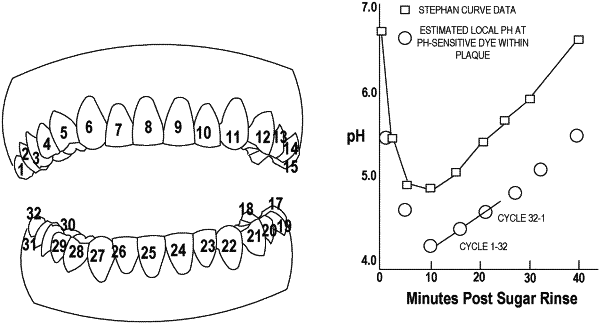| CPC A61B 5/0088 (2013.01) [A61B 5/0071 (2013.01); A61B 5/14539 (2013.01); A61B 5/7264 (2013.01); A61C 19/063 (2013.01); A61K 49/0017 (2013.01)] | 23 Claims |

|
1. A system for the optical measurement of pH, comprising:
a light emitter to emit an excitation light;
a detector configured to receive, in response to the excitation light, florescence light produced by a pH-sensitive compound when the pH-sensitive compound contacts one or more surfaces of individual teeth; and
a controller coupled to the detector and the light emitter, wherein the controller includes logic that when executed by the controller, causes the system to perform operations including:
emitting the excitation light from the light emitter;
performing a series of measurements over a period of time, each measurement included in the series of measurements measuring an intensity of the florescence light emitted from the pH-sensitive compound when the pH-sensitive compound contacts the one or more surfaces of the individual teeth;
correlating the intensity of the florescence light to a pH proximate to the one or more surfaces of the individual teeth for the series of measurements to determine at least one of a resting pH, a minimum pH, or a pH recovery rate proximate to the one or more surfaces of the individual teeth; and
determining, based on at least one of the intensity of the florescence light the resting pH, the minimum pH, or the pH recovery rate, one or more locations on the individual teeth likely to develop demineralization.
|